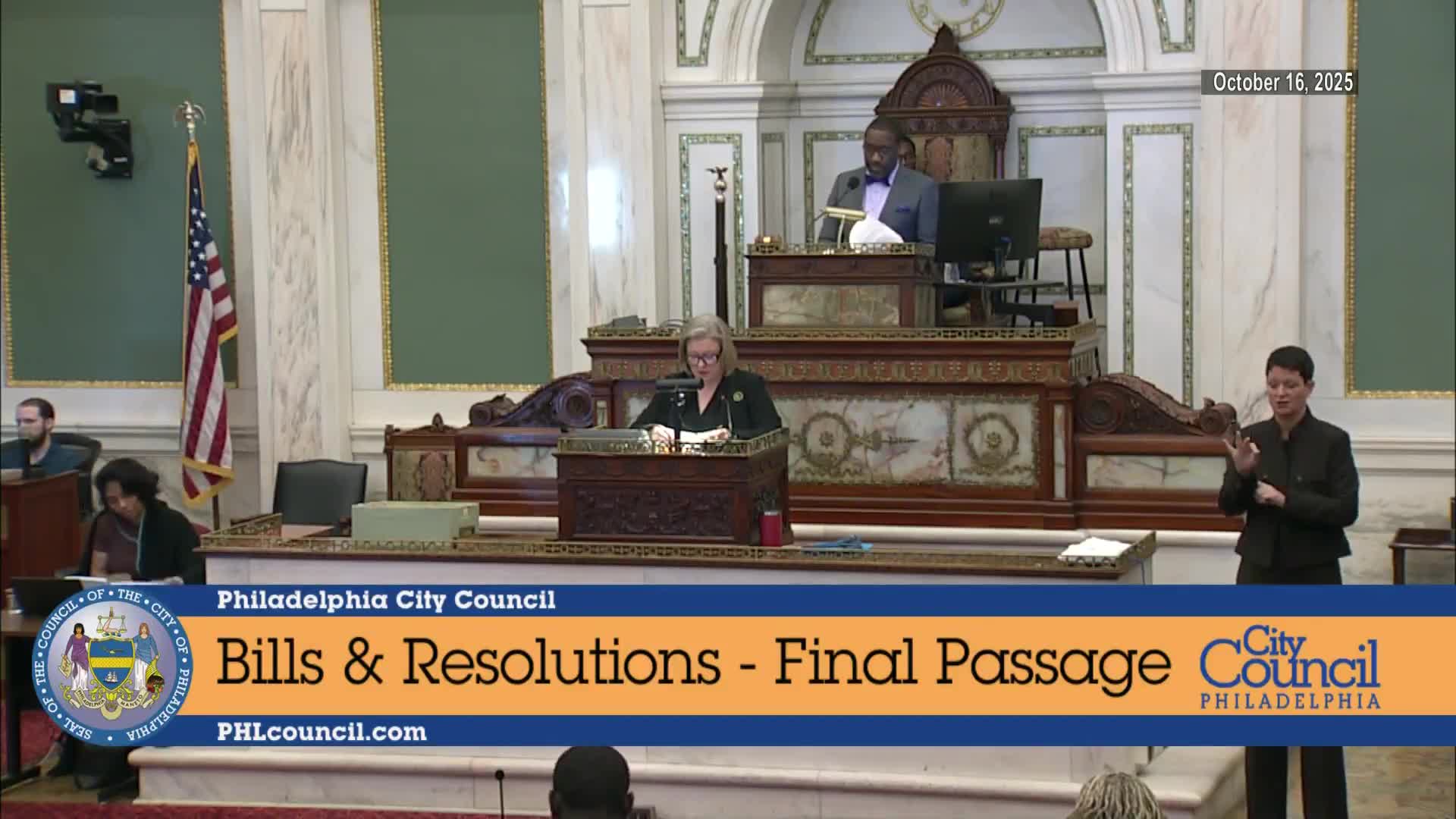Philadelphia council votes: speed cameras approved; rental-document change and consent agenda pass
October 16, 2025 | Philadelphia City, Pennsylvania
This article was created by AI summarizing key points discussed. AI makes mistakes, so for full details and context, please refer to the video of the full meeting. Please report any errors so we can fix them. Report an error »

Philadelphia City Council on Thursday approved a package of measures and moved several more forward, including final votes and roll calls on automated speed cameras and a change to tenant documentation that adds voter-registration information.
Council voted to authorize expanded use of automated speed enforcement on designated state routes (bill 250770). On a recorded roll call the vote was 16–0 in favor. Councilmember Isaiah Thomas introduced related traffic and safety resolutions earlier in the session; proponents described automated enforcement as a tool to reduce speeding and crashes on high-risk corridors.
Separately, an ordinance requiring that tenant documents provided with a certificate of rental suitability include voter-registration information (bill 250774) passed with a recorded vote of 17–0.
The session also cleared a large consent agenda: council placed multiple zoning map changes, encroachment permits, sidewalk-café and streetery authorizations, and parking and traffic-direction ordinances on the consent agenda and approved them in a single roll call. Among the consent items were ordinances authorizing sidewalk cafes, streetery and dumpster encroachments, parking regulations on designated blocks and the 40th Street loading/parking regulations (bill 250712). Those items were recorded as passed on the consent calendar with members indicating "aye on all bills" during roll call.
Several other measures were amended on the floor and scheduled for final passage at a later session. Council amended and sent bill 250718 — which would authorize ongoing Streets Department parking and loading rules in a defined Center City area — to the final-passage calendar after a floor amendment by Councilmember Jeffrey J. Young.
Council also took committee and oversight steps: it authorized hearings on the state of school facilities, on rising energy costs, and on data-center development. These resolutions were adopted by voice vote and will be scheduled as committee hearings.
Roll-call tallies and recorded outcomes were read into the public record for several items; the clerk printed messages and statements that were appended to the journal.
Council voted to authorize expanded use of automated speed enforcement on designated state routes (bill 250770). On a recorded roll call the vote was 16–0 in favor. Councilmember Isaiah Thomas introduced related traffic and safety resolutions earlier in the session; proponents described automated enforcement as a tool to reduce speeding and crashes on high-risk corridors.
Separately, an ordinance requiring that tenant documents provided with a certificate of rental suitability include voter-registration information (bill 250774) passed with a recorded vote of 17–0.
The session also cleared a large consent agenda: council placed multiple zoning map changes, encroachment permits, sidewalk-café and streetery authorizations, and parking and traffic-direction ordinances on the consent agenda and approved them in a single roll call. Among the consent items were ordinances authorizing sidewalk cafes, streetery and dumpster encroachments, parking regulations on designated blocks and the 40th Street loading/parking regulations (bill 250712). Those items were recorded as passed on the consent calendar with members indicating "aye on all bills" during roll call.
Several other measures were amended on the floor and scheduled for final passage at a later session. Council amended and sent bill 250718 — which would authorize ongoing Streets Department parking and loading rules in a defined Center City area — to the final-passage calendar after a floor amendment by Councilmember Jeffrey J. Young.
Council also took committee and oversight steps: it authorized hearings on the state of school facilities, on rising energy costs, and on data-center development. These resolutions were adopted by voice vote and will be scheduled as committee hearings.
Roll-call tallies and recorded outcomes were read into the public record for several items; the clerk printed messages and statements that were appended to the journal.
View full meeting
This article is based on a recent meeting—watch the full video and explore the complete transcript for deeper insights into the discussion.
View full meeting